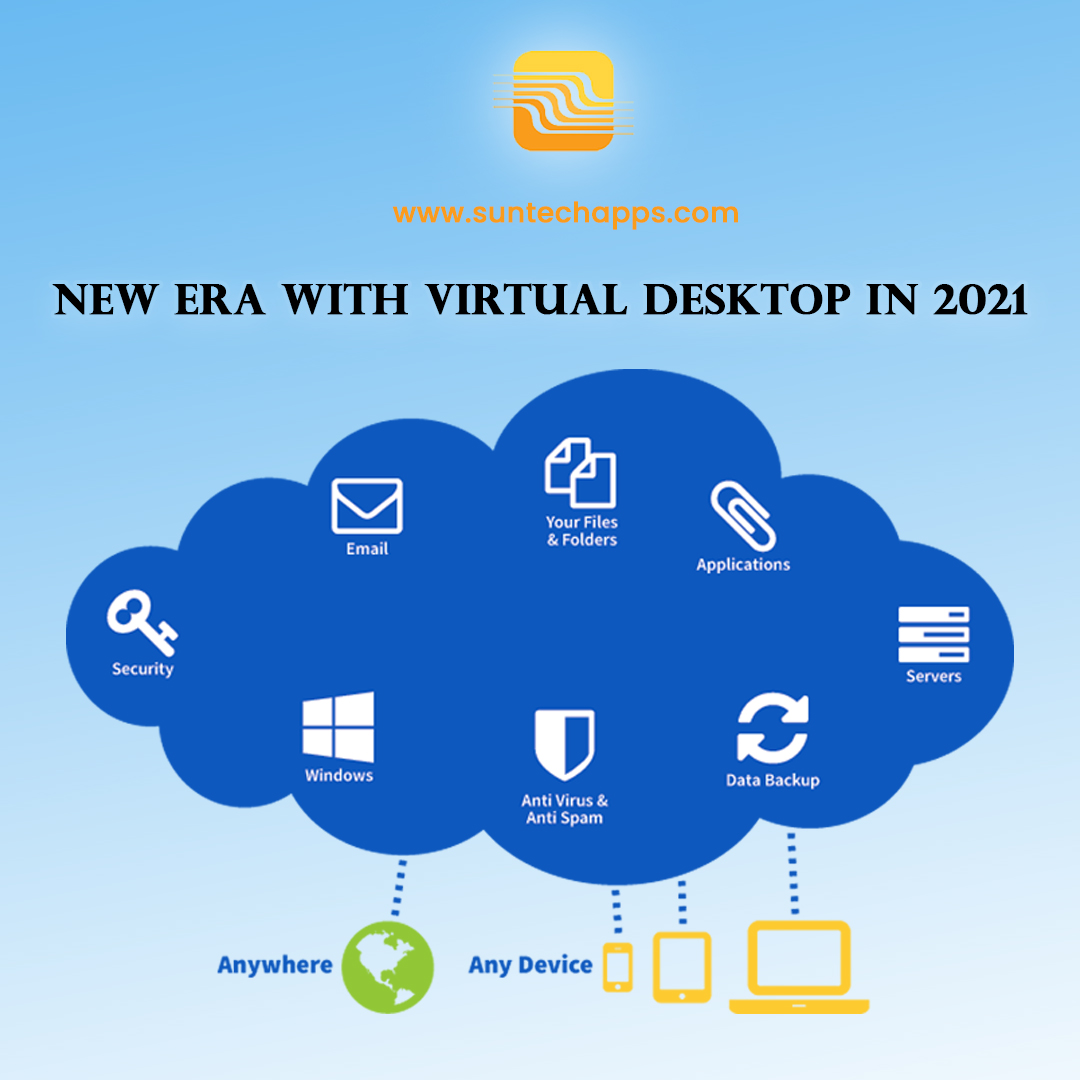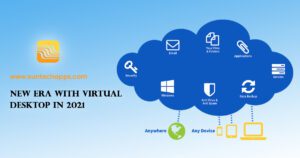New Era with Virtual Desktop in 2021
4 min read
New Era with Virtual Desktop in 2021 insta
What is Virtual Desktop?
Virtual desktops are preconfigured images of operating systems and applications in which the desktop environment is separated from the physical device used to access it. Users can access their virtual desktops remotely over a network. Any endpoint device, such as a laptop, smartphone or tablet, can be used to access a virtual desktop. The virtual desktop provider installs client software on the endpoint device, and the user then interacts with that software on the device.
A virtual desktop looks and feels like a physical workstation. The user experience is often even better than a physical workstation because powerful resources, such as storage and back-end databases, are readily available. Users may or may not be able to save changes or permanently install applications, depending on how the virtual desktop is configured. Users experience their desktop exactly the same way every time they log in, no matter which device they are logging into it from.

Types of virtual desktops –
There are a few different types of virtual desktops and desktop virtualization technologies. With host-based virtual machines, one virtual machine is allocated to each individual user at login. With persistent desktop technology, that user connects to the same VM each time they log in, which allows for desktop personalization. Host-based machines can also be physical machines hosting an operating system that remote users log into.
A virtual machine can also be client-based, where the operating system is executed locally on the endpoint. The advantage of this type of virtual desktop is that a network connection is not required for the user to access the desktop.
Virtual desktop infrastructure (VDI) refers to a type of desktop virtualization that allows desktop workstation or server operating systems to run on virtual machines that are hosted on a hypervisor in on-premises servers. The user experiences the operating system and applications on an endpoint device, just as if they were running locally. With desktops as a service (DaaS), a service provider hosts VDI workloads out of the cloud and provides apps and support for enterprise users.
How a virtual desktop works?
Virtual desktop providers abstract the operating system from a computer’s hardware with virtualization software. Instead of running on the hardware, the operating system, applications and data run on a virtual machine. An organization may host the virtual machine on premises. It is also common to run a virtual desktop on cloud-based virtual machines. Previously, only one user could access a virtual desktop from a single operating system. The technology has evolved to allow many users to share an operating system that is running multiple desktops.

IT administrators can choose to purchase virtual desktop thin clients for their VDI, or repurpose older or even obsolete PCs by using them as virtual desktop endpoints, which can save money. However, any money saved on physical infrastructure costs may need to be quickly reallocated to software licensing fees for virtual desktops.
A virtual desktop infrastructure provides the option for users to bring their own device, which can again save IT departments money. This flexibility makes virtual desktops ideal for seasonal work or organizations that employ contractors for temporary work on big projects. Virtual desktops also work well for salespeople who travel frequently because their desktop is the same and they have access to all the same files and applications no matter where they are working.
Benefits of virtual desktops
There are many advantages to a virtual desktop environment:
- Security: One way in which virtual desktops can be superior to physical desktop machines is security. Data is stored in the data center and not on individual endpoint machines, which can allow for greater data security. If an endpoint device is stolen, it does not contain any data for thieves to access.
- Flexibility: For organizations with a flexible workforce, virtual desktops have a clear advantage. IT administrators can quickly and easily allocate virtual desktops without the need to provision expensive physical machines to users who might only need them for a short time.
- Cost:Because virtual desktops require less physical equipment and maintenance, they can be more cost-effective than physical desktops.
- Easy management:An IT department can easily manage a large number of far-flung virtual desktops from a central location. Software updates are faster and easier because they can be done all at once instead of machine by machine.
- Computing power:Thin clients are all that are needed for virtual desktops because the computing power for the desktops is coming from a powerful data center.
There are downsides to using a virtual desktop environment. If the data center runs out of storage space, users are not able to access their desktops. Large storage environments that have the capacity to store data for multiple virtual desktops can get expensive. Poor network connectivity will adversely affect the user experience, and users will also not be able to access their desktop if there is no network connection, which might be the biggest disadvantage of a virtual desktop. Depending on how an organization runs, the benefits of virtual desktops often still outweigh the potential challenges.
What is the purpose of a virtual desktop?
A virtual desktop allows users to access their desktop and applications from anywhere on any kind of endpoint device, while IT organizations can deploy and manage these desktops from a centrally located data center.
Many organizations move to a virtual desktop environment because virtual desktops are usually centrally managed, which eliminates the need for updates and app installations on individual machines. Also, endpoint machines can be less powerful, since most computing happens in the data center.




